By Nadia Todoroff | Photography by Susan Ayer
Martha Travers is a beloved teacher at the University of Michigan who shares the wisdom of contemplative nature-based practices with her students. Her courses are influenced by her own shamanic practices, and provide a space for students of all walks of life to listen to their inner voices. For me, Martha’s classes were a deep breath in the chaos, my fulcrum point, my outlet to investigate what was going on internally, and a place where I could and was encouraged to simply “be.” Her new book, The WayCard Oracle: A Guide to the Inner Journey, is available at Crazy Wisdom Bookstore.
I sat down with Martha on her patio outside her little house on a hill, overlooking grassy gardens and surrounded by woods in Manchester. Her sweet dog, Violet, accompanied us and ran circles around the yard.
Nadia Todoroff: What do you do around Ann Arbor?
Martha Travers: I do not live in Ann Arbor, but I have been teaching here at the University of Michigan on and off for many years. I did my graduate work at the University of Michigan, a Ph.D. in English Language and Literature, in the late 1970s and taught writing while a graduate student. I taught at Michigan State University for a couple years after graduating in the mid-1980s, but chose to stay home with my children after my second child was born in 1987. I returned to U-M in the early 1990s and again taught writing for a couple years before beginning to homeschool my children around 1994.
Since my own undergraduate days in the mid-1970s, I had been a student of meditation and other forms of contemplative practice, including shamanism. In a very interesting and unexpected way, in 2005, I was invited to return to U-M by Ed Sarath, Founder and, at that time, Chair of the Jazz Department in the School of Music, Theatre, and Dance, to teach a contemplative studies course in his newly-created Program in Creativity and Consciousness Studies. (See our interview with Ed Sarath in Issue 55.) Since that time, I have been teaching as a Lecturer in the Jazz Department’s contemplative studies area. I teach various forms of contemplative practice and am especially interested in what I call “nature-based contemplative practice.”
I also teach workshops and retreats in various places in Michigan, including most recently at the small farm where I live near Manchester. I call it “Blessed Bee Farm,” and I am excited to share it with others as a place for retreat and restoration.
Nadia Todoroff: If you were to give yourself a “title” for what you do, what would that be?
Martha Travers: I usually use the word “guide” when I refer to my retreats or workshops and to my teaching at the University. My role is to act as a guide for people’s unfolding, for the unfolding of their inner path.
If I were to name myself, I would call myself a “mystic.” That is not because I thought it sounded like something I wanted to do or be; it’s because of experiences that I’ve had during many years of living in the country. In those experiences, I experienced the sense of union with nature — the nature that we are. The really important recognition is that we are nature, and so if we allow ourselves to be really quiet and simple in nature we then feel that connection. And to me that is mystical — that sense of oneness with everything.
Nadia Todoroff: Do you have any childhood experiences that introduced you to the nature-based path?
Martha Travers: Not so much as a child. I think that children are already connected, that the experience of the child is an experience of mystical oneness. It’s as we grow older and through conventional education that we begin to lose that primary connection that we are born with. But as I became older and experienced more distance and separation from myself, then for me a primary experience was as a mother, giving birth, and also gardening. Those two experiences for me were very profound teachers of my essential oneness.
During the years that I was a mother, I lived in a relatively rural and remote setting compared to living in a city. My second child was born at home in 1987. Through that experience, I began to learn about medicinal plants. Then I began growing medicinal plants. As soon as you start actually growing the plants, then that teaching relationship begins to develop even more than previously. So I would say that giving birth at home, encountering medicinal plants, and growing medicinal plants were initiatory experiences.
Todoroff: What is nature-based practice and why is it important?
Travers: Nature-based practice, the way I guide it, is to help us reconnect with the nature of which we are a part, through opening a conversation between ourselves and the elements. I am speaking of the earth, the water, the fire, and the air. I learned some of these practices from Indigenous Kichwa teachers in the Andes mountains. There I learned very specific ways of renewing our connection with the elements. It’s important to emphasize that this connection is already there. It’s not like it’s something we are creating. But that connection has been impeded for various reasons in individuals. And so the experience of having a conversation with nature, speaking with the water, speaking with the air, speaking with the fire, speaking with the earth, is the center of the nature-based contemplative practice.
This also includes, as we move deeper into working with the elements, very simple practices like lying down on the ground, the whole body on the earth. The encounter with water — meaning the drinking of water, the greeting of the water, the feeling of the passage of the water through the body, and the expression of gratitude to the water — these are also examples of practice. The foods that we eat, the way that we relate to our foods, the way the foods are grown, the way that we prepare the foods, and the way we take in these foods are all part of our relationship with the earth element. And so, this is also part of nature-based contemplative practice — to cultivate an actual communication with the food, an opening of the energy channel between the individual and the food that they’re eating. My experience is that nature is a great teacher, and that the more time we spend quietly in nature without an agenda the more connected we feel with our own inner path, and also with the cosmos of which we are a part.
“The really important recognition is that we are nature, and so if we allow ourselves to be really quiet and simple in nature we then feel that connection. And to me that is mystical — that sense of oneness with everything.”
Todoroff: What are steps we can take in cultivating a relationship with the elements?
Travers: The first part is greeting, saying hello. That act of greeting is an acknowledgement of the presence of an energy. The air, the water, the earth, and the fire are presences that permeate our lives to such a degree that we are less aware of them in a way, because they are so prevalent. So this first step in the practice of saying “hello,” of greeting, is an act of recognition. It’s a way of saying, “I see you, I honor you, I respect you.” And then, after that, we move into the receptive phase — that phase of being still and quiet with the water that we’re drinking or with the food that we’re eating or with the ground that we are sitting or lying down on. That stage of deep silence and openness is our opportunity to feel what we are receiving from the elements. And then it’s very important to express gratitude when we feel complete, when we feel that we’re ready to move on. That expression of gratitude is a central part of the practice.
Todoroff: How have these practices shaped your life?
Travers: I hope that I am more able to be in rapport with nature in a way that is doing less harm. And also that I have more ability to listen to my intuition and follow intuitive guidance because of this rapport with nature.
Todoroff: How do you feel intuition and nature are connected?
Travers: So if we go to this basic principle that we are nature, part of our way is to instinctively know how to be with nature — to go with nature rather than work against nature. But because of years of industrialization and separation from daily encounters with growing our own food, or building a fire to keep ourselves warm, or finding water — because we’ve been separated from those daily encounters, we are also separated from that more instinctual side of ourselves that knows how to be in relationship with nature. So that’s why it’s so important to reconnect, and then that brings up that intuitive knowing that we all have. I’m sure many people have experienced taking an afternoon, going to a park, sitting in the backyard, going for a walk, and in that moment or in that time period receiving intuitive insights about their lives that they would not have received if they had not taken that time to be quiet in nature.
Todoroff: Earlier you mentioned learning nature-based practices in the Andes mountains. What brought you there?
Travers: I was invited to go to Ecuador by one of the elders who had come up to the University of Michigan, along with a group of shamanic teachers from the Amazon and the Andes mountains. They were speaking at a conference at the University of Michigan School of Medicine. The conference included a session on alternative philosophies of health and healing. That first event was in the fall of 1999. Then the following spring of 2000, there was a workshop here in this area. One of the teachers from the Andes, Alberto Taxo, guided at that workshop. He invited anyone who felt called to come to the Andes to spend some time with his family, to feel the teachings that were coming from the mountains, from the condor, from the wind, from the fire, from the song and from the dance and from the way that the people move there.
“…the intuition is the part that has been often, in the dominant culture, ignored or suppressed.”
Todoroff: What did you learn there?
Travers: I traveled to the Andes many times between 2000 and 2009. On the first trip, I was only there for 10 days, but during that 10 days, I experienced a huge shift in my sense of self. When I got on the plane to go back to the States after that first trip, this awareness came just as the plane was lifting up for take-off out of Quito. I felt that I had just passed through as much change as would happen in seven, seven-year cycles. It’s not easy for me to isolate an individual experience, as much as to say that the experience was one that I felt my physical being cleansed, my emotional being cleansed, and my spiritual self receiving support. That first journey was a very stabilizing experience.
Todoroff: Did that experience influence your practices back in the States?
Travers: I don’t think it changed an external practice because I already was, even before I traveled to the Andes, doing these practices in my own way, these practices of communion with nature. It did activate in me a desire to share these teachings beyond my small circle of family. So it’s not so much that it changed the way that I practiced, as that it encouraged me, invited me, and motivated me to reach out to offer to share these practices with people who might want to have these experiences.
Todoroff: What led you to teach contemplative studies and nature-based practice at the University of Michigan?
Travers: I actually first met Ed Sarath in Ecuador. He also went on that first trip to learn from the elders in the Andes in the year 2000. It was about five years later that he invited me to return to the University of Michigan to teach contemplative practices in the Program in Creativity and Consciousness Studies. I was not in any way thinking that I would ever go back to the University, my attention was not in that direction, but it was because he invited me to come that I came back and began teaching again.
The connection between my early years teaching writing at the University and these years teaching contemplative practices is my interest in inner development.
Back when I was teaching writing, I discovered that what students most needed was to access their voice. I realized that in order to write well, students needed to care about what they were writing, and that in order to care about what they were writing, they needed to have it really coming from a deep sense of themselves. So in the experience of working with young people with writing, I discovered that I was most interested in helping people access that deep self.
When I decided to home-school, I left the University. During that time, between 1994 and 2004, I continued to do this work of helping people access their deep self through offering small workshops and retreats. I think of the deep self as our inner voice or inner dream. One of my teachers, Cheryl Stereff, who did a lot of shamanic guiding in Ann Arbor during the 1980s and 90’s, referred to this as “the dream of paradise.” My work is to help us access this place in ourselves, to help us envision a beautiful, harmonious existence, and to help us discover how we can express our own gift in life.
What are we really trying to give? What are we seeking? Not for ourselves, but to give to others. That’s the energy. It’s the way the energy moves from us, outward. In order to give it outward, we need first to access it. So my work is to help people access it. And that’s what everything I do ultimately is about. It’s about accessing that inner dream, and then creating the path, opening the path.
Todoroff: What classes do you teach now at the University of Michigan?
Travers: I teach a course called “The Contemplative Practices Seminar,” which is an introduction to sitting meditation, walking meditation, contemplative reading, and reflective writing. I also teach a course that is thematically based. The theme differs in different terms. Currently, the theme is “Finding Your Way,” and we are using my new book in that class. The book is called The WayCard Oracle: A Guide to the Inner Journey (Schiffer Books, 2016; available at Crazy Wisdom Bookstore). The book includes a deck of oracle cards and a guide book. In the class, the students are using the WayCards to help them recognize the, shall we say, inner archetypal energies that are propelling their lives. In addition to using the WayCards, students learn sitting meditation and nature-based contemplation in this class.
In the winter semester I teach a course that is about the nature of consciousness, and because it’s such a big field, I narrow it to how we experience consciousness coming to us from nature. In order to do that we explore shamanism and Indigenous perspectives on the nature of consciousness. So those are the three courses. I’m not the only person who teaches courses like this. Professor Ed Sarath teaches different courses in the contemplative field. He is a leading scholar in the field of consciousness studies, and so he is a really important resource for students who want to learn more about the academic, scholarly field of consciousness studies. The program that Ed designed, the Program in Creativity and Consciousness Studies, is groundbreaking.
Todoroff: What do you hope your students will gain from taking your classes?
Travers: I hope my students will be able to access their intuitive side, and will recognize that the intellect and reasoning are essential aspects of the human being, and that with those essential aspects of the intellect and reason, the intuition is the part that has been often, in the dominant culture, ignored or suppressed. This side of ourselves is often also described as “the feminine,” not meaning gender specifically, meaning an energy we all have no matter which gender we identify with, and that intuitive, receptive — sometimes called “yin” — side of ourselves needs to be given space. So I hope that my students will be in balance more when they leave my classes, that they will be using their capacity to reason and their intellect and that they will also be able to access and trust their intuition.
Todoroff: Who have been your greatest teachers on your path?
Travers: When I began to experience the shamanic side of my life, Crow was a very important energy. And the woods that I lived in, which I heard receive a name, “Duirhaven.” “Duir” is the Celtic word for “oak,” so it means “Haven of the Oaks.” And then prior to that — and really most importantly — my children. Giving birth and being close to the spiritual cleanliness and openness of an infant was a great, great teacher to me.
The way it happened with Crow is that I would have visitations when I was in my yard. Maybe I was gardening or lying down in the tall, wild grasses. And you know how crows are — they are a very communicative bird. There would be these patterns. They would show up, calling and swirling into the yard, and there would always be three of them. The first time I really noticed this crow pattern actually was not in my yard. It was when I was teaching, and I was on my way to work in the early morning. Three crows were sitting on what appeared to be an extremely light blade of grass that could not have possibly supported those three crows up above the ground like that. It was a windy day and the trees and things around them were moving, but there was no movement. The crows and what they were sitting on, a weed perhaps, were perfectly still. So moments like that call one’s attention. That would be what we may call an annunciation — a moment when nature says, “Ah, pause, see. There’s more here than might first appear.”
I’m not too into interpreting. My path is not so much to say, “Oh those crows were telling me to do thus and so.” My feeling is that moments like that are nature’s way of saying “pause, open, listen.” It’s not about grabbing for information or an interpretation. It’s just about pausing and opening and listening. And so then what happens, gradually over time, there’s an energetic change. My personal experience of it would be to say that this change is physical. It is happening at a cellular level. So the body begins to wake up to its nature, and that means that this instinctual and intuitive aspect of ourselves also starts to wake up as the body is waking up. So it’s not so much that these teachers are coming with specific information for me. That’s not been my experience. My experience is that they encourage me to connect. And that with that feeling of connection gradually over time I receive, through my own energy field, insights and awarenesses that guide me on my path.
Todoroff: What are you continuously learning through your practices?
Travers: Well, I hope I’m learning humility. I hope that I’m learning to let go of needing to be in a certain place, in a certain way, at a certain time. I hope that I’m learning to take care of the life support systems on the planet in a more conscious way than maybe I had been doing previously.
Todoroff: Do you have any advice for people starting on the nature-based path?
Travers: First of all I would say trust yourself. Don’t give your power away to teachers or to externals. And know that everything you need is already with you. This is one of the most important teachings of contemplative practice. That we are already there. Our practice is helping us remove the veils that separate us from our true nature. So there can be a great ease in practice. It does not have to be this intense strain, this striving, this effort to arrive. It’s important to realize that this is our nature. It’s already how we are, it’s already who we are. And so our practices are helping us uncover this self that already is present.
So for someone beginning it’s easy to be caught up in ego and in wanting and in trying to produce results. So the most important thing is to remember that all we have to do is lie down on the ground. All we have to do is sit quietly in meditation. All we have to do is express gratitude to the water when we drink it. Express gratitude to the food when we eat it. Express gratitude to the sunlight and to the rain. Express gratitude to our family. To the animals who inhabit the world with us. Be careful to not do harm. One other thing. I think one of the most important characteristics for this path is sincerity. If a person is sincere in their desire to learn, everything will come in its own way and its own time.
Todoroff: Are there any books you’d like to recommend for those wishing to pursue nature-based practices?
Travers: There’s a wonderful, recent book by Robin Wall Kimmerer called Braiding Sweetgrass: Indigenous Wisdom, Scientific Knowledge and the Teachings of Plants (Milkweed Editions, 2015) that is an expert distillation of Indigenous wisdom (she is Potawatomi) and the scientific understandings of a biologist. Kimmerer tells beautiful stories that give the reader the experience of communion — this very conversation with nature that I was speaking about. She helps the reader experience that communication, that way of conversing with the earth, the water, the fire, and the air. I would also suggest an older book written by Doug Boyd. The title is Rolling Thunder (Delta, 1976). This is a description of Boyd’s encounter with a Cherokee/Shoshone medicine man in the United States in the early 1970s. The other book that I would recommend is Joan Halifax, The Fruitful Darkness: A Journey Through Buddhist Practice and Tribal Wisdom (Grove Press, 2004), an absolutely brilliant and compelling book — a beautiful description of her path and the union in her path of Buddhism and shamanism.
Todoroff: Will you be teaching any workshops around the area for those not able to take your classes at U-M?
Travers: Yes, and anyone who would like to know about my retreats can go to my website, which is natureandhealing.org. The website describes the retreats. I offer some in Southeast Michigan, and I also teach in Northwest Michigan at Sleeping Bear Dunes National Park, and at the Fetzer Institute’s GilChrist Retreat Center in Southwest Michigan. I also do phone consultations, readings of the WayCards, or guidance on the nature-based path. Last year I began an apprenticeship program for people who want to study with me over a longer period of time. This is something a person can do at a distance. They do not need to live in Michigan to apprentice to me.
For more info contact Martha at mwtravers@natureandhealing.org, or visit her website natureandhealing.org.



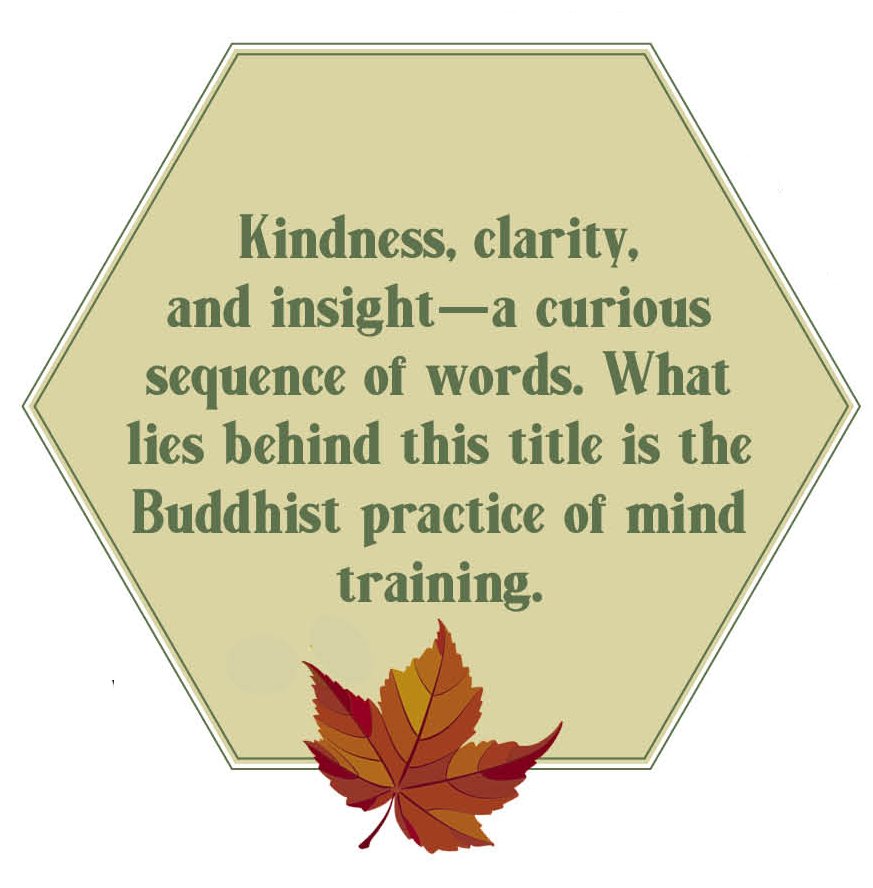







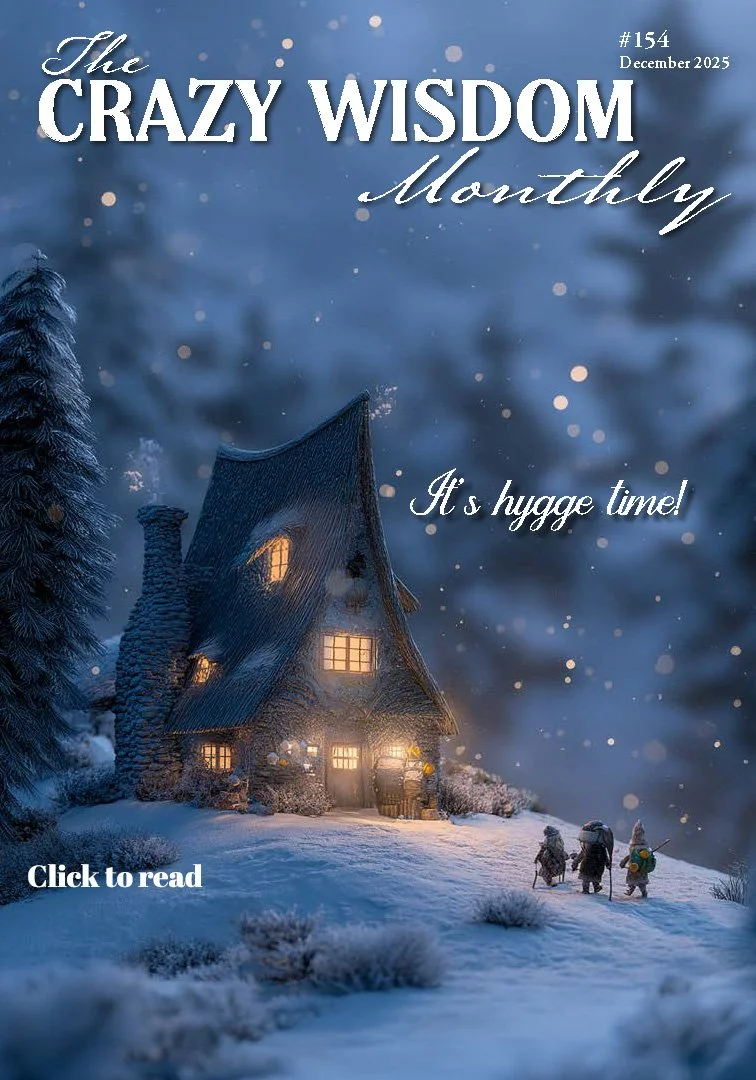
















































































































































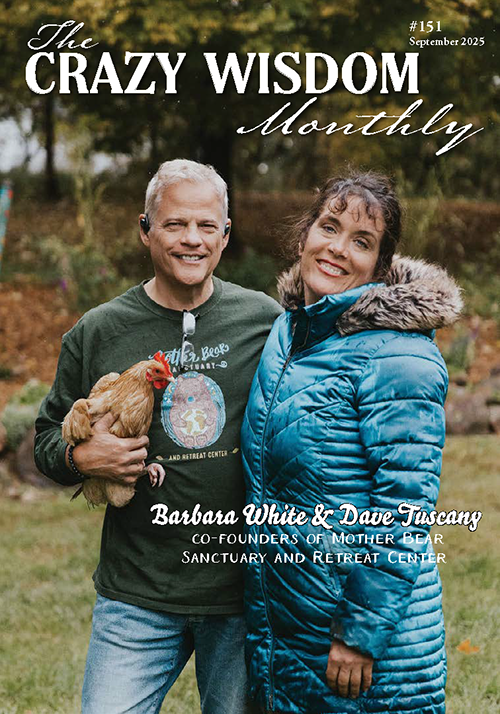
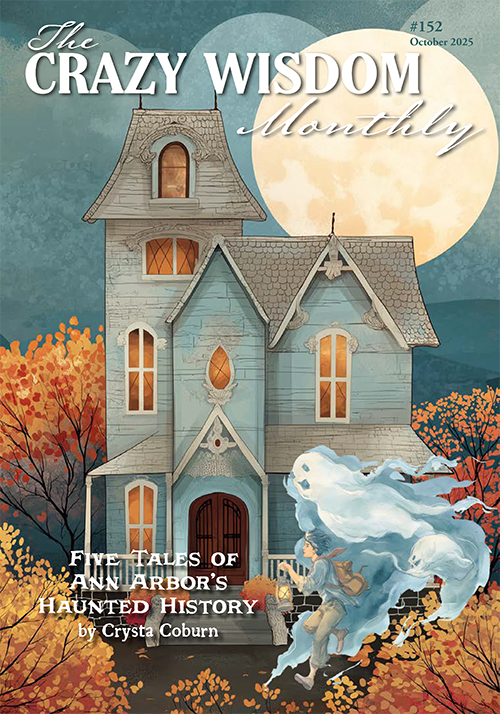
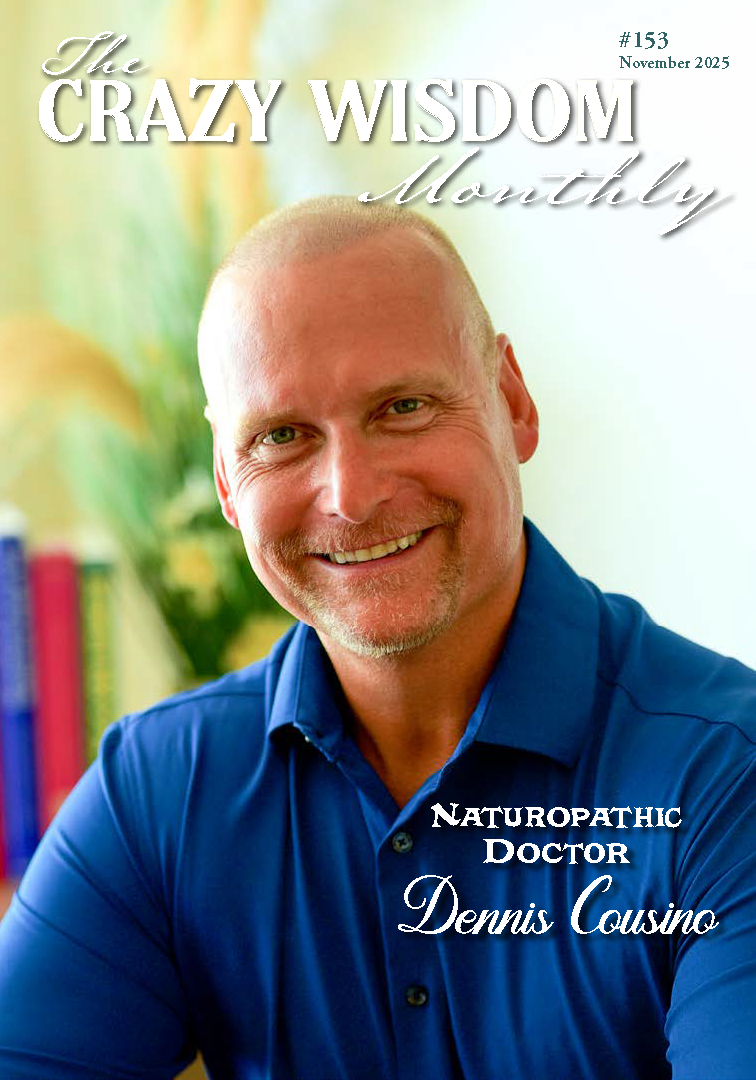
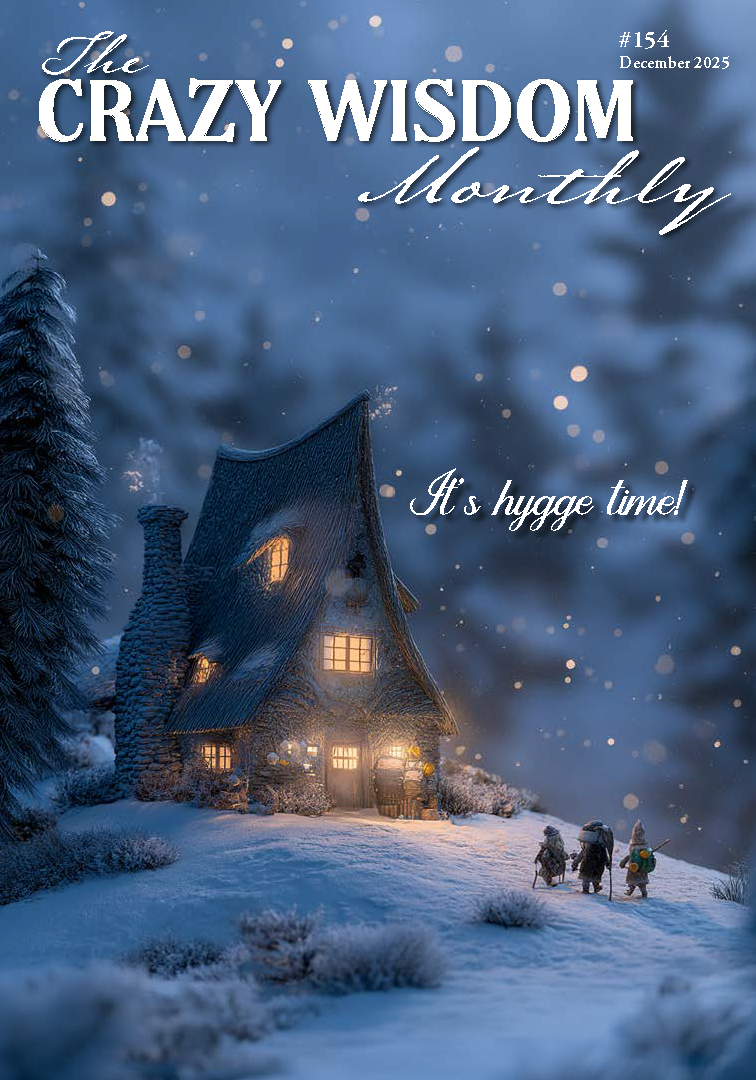
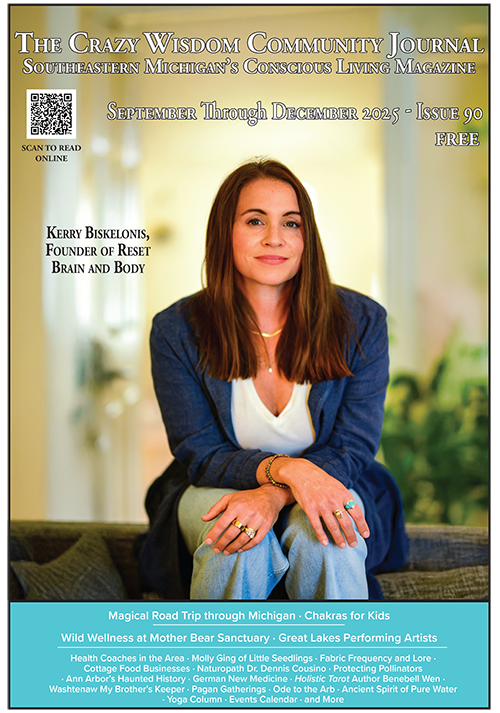








































Buddhists comprise only around 1% of the U.S. population, yet Buddhism has exercised a disproportionate influence on American culture, especially since the end of World War II. Buddhist images, whether of Shakyamuni or Tibetan mandalas, seem ubiquitous. Buddhist-based mindfulness practices are taught in countless American institutions, from prisons, to schools, to hospitals. And influential cultural figures, including actor Richard Gere, composer Philip Glass, and poet Jane Hirshfield, speak openly of their Buddhist practice.